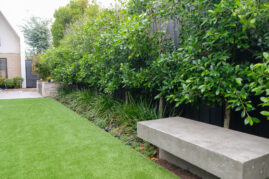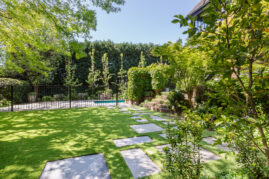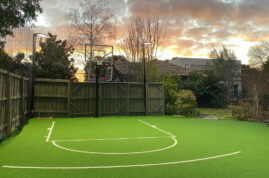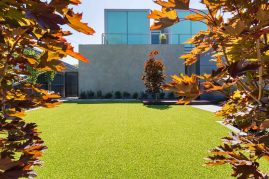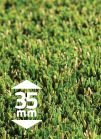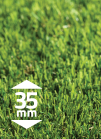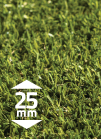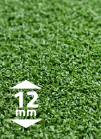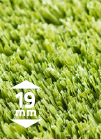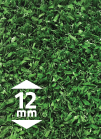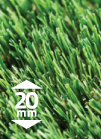Frequently Asked Questions
Here are some of the questions we’re often asked. If you can’t see your question here, please don’t hesitate to contact us.
Where can I buy Tuff Turf?
At your local Bunnings store, or online.
How much does it cost?
Please view the Bunnings website for pricing.
Can I get custom orders?
Yes, go to Bunnings Trade Desk to create a custom order.
Please note that our rolls only come in 1.8m and 3.75m widths, and are only available in full metre quantities with a minimum of 10m for custom orders. For more information please head to your local Bunnings.
Can I get someone to install Tuff Turf for me?
Yes, just speak to a friendly Bunnings staff member in-store, or contact us.
Can I install Tuff Turf myself?
Yes. Follow our simple 4-step instructions and you can transform your entire backyard this weekend.
Is Tuff Turf tough enough to use around a swimming pool?
Yes, Tuff Turf is perfect for demanding areas like swimming pool surrounds. We recommend you install it without rubber infill as the rubber granules may end up in the pool.
Will Tuff Turf fade?
Tuff Turf is UV stabilized and CSIRO tested to stand up to the harsh Australian climate with minimal (unnoticeable) colour change over the years.
Does Tuff Turf come with a warranty?
Yes, Tuff Turf is guaranteed for 7 years (and proven with real customers to last twice as long).
What maintenance is required?
Tuff Turf synthetic grass is virtually maintenance free.
How much Tuff Turf will I need?
Tuff Turf synthetic grass rolls come in 3.75 metre widths and up to 20 metres in length (75sqm total). You should allow 300mm extra for each measurement to ensure movement at either end.
To estimate the amount of infill required – work on 1 bag of sand (25kg) or sand/rubber (20kg) being used every 2sqm. Therefore, 48sqm of synthetic turf = 24 bags of sand.
Tuff Turf synthetic grass joining tape is required wherever the synthetic turf joins up to another piece of synthetic turf. It comes in rolls of 10 metres long x 150mm wide. Simply add up the lineal metres of where your joins are.
- If you get to design your own area, it is most cost effective to keep the measurements as close to 3.75m as possible. Example: 3.75m, 7.5m, 11.25m. This means you will reduce the amount of wastage.
- Curves and unusual shapes will require more joins and more wastage which you will need to factor in when working out your measurements.
Is Tuff Turf pet friendly?
Yes. Tuff Turf is resistant to pet stains. Simply remove any ‘mess’ and flush the area with water.
What is Tuff Turf made from?
Tuff Turf artificial grass is made from extruded polypropylene, polyethylene, or nylon PVC (or plastic) fibre.
What is underneath Tuff Turf?
Before laying Tuff Turf, the area should be excavated to a depth of 80mm. A layer of 60mm of compacted crushed rock should be added for drainage. And a layer of washed silica sand should be distributed on the surface to hold the synthetic turf down.
Where is Tuff Turf made?
Tuff Turf is certified to world’s best quality management standards in production and environmental management. Different Tuff Turf varieties are manufactured in Australia and China by companies holding ISO 9001 and ISO 14001.
Does Tuff Turf melt?

 Synthetic turf fibres can melt when subjected to high heat (80+ degrees Celsius). Common examples of this are: embers from a fire pit, dripping oil from a BBQ, placing a metal object on top of the surface on a hot day, reflective heat from glass or metal sheets situated close to the surface. These sources of heat should be avoided at all costs, and preclude us from honouring any warranty.
Synthetic turf fibres can melt when subjected to high heat (80+ degrees Celsius). Common examples of this are: embers from a fire pit, dripping oil from a BBQ, placing a metal object on top of the surface on a hot day, reflective heat from glass or metal sheets situated close to the surface. These sources of heat should be avoided at all costs, and preclude us from honouring any warranty.
What different configurations are Tuff Turf grasses available in?
Tuff Turf grasses are available in a wide variety of widths and lengths. By the metre at 1.8 and 3.75m wide, and in Prepacks at 1m and 1.8m wide rolls.
There are many factors to be mindful of when ordering turf in any configuration, two of the most important ones are: batch differences, and planning your joins.
- Batch Differences
Similar to carpet fibres, synthetic turf fibres are created with by adding a dye to various polymers. This means that the first metre in the batch will be a slightly different shade to the 1000’th metre in the batch. With that in mind, it is vital that when planning your project that you do the following: purchase the turf for your entire project at one time – don’t source it from different stores, purchase your turf in the same configuration – use EITHER 1.8m rolls or 3.75m wide rolls to avoid any batch differences. Even if you have a narrow area to fill, try to avoid using many 1m pre-packs to fill the space to negate potential batch issues. - Planning your Joins
 Many turf buyers aim to save money by using many Prepacks with an aim to join them together. This is fraught with danger (see above point about batches) plus you may end up with many ugly joins. Prepacks are really designed to fill smaller spaces and the less of them you join, the better your surface will look: this is where adequate planning comes into play!
Many turf buyers aim to save money by using many Prepacks with an aim to join them together. This is fraught with danger (see above point about batches) plus you may end up with many ugly joins. Prepacks are really designed to fill smaller spaces and the less of them you join, the better your surface will look: this is where adequate planning comes into play!
In all installations, under all circumstances, you should plan to cover as much of the area as possible with the least amount of individual pieces of turf. In many cases, this will lead to wastage (unused and unneeded leftover bits of grass) but will definitely lead to a better end result. The less joins the better, so plan those joins!




